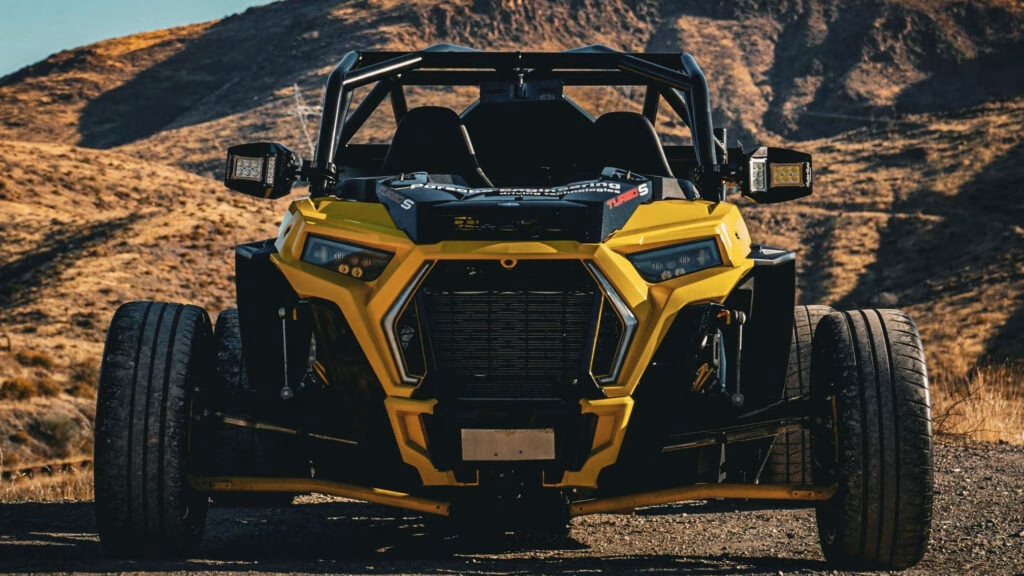What Makes This Polaris RZR XP Turbo S So Different From the Rest?
Every so often, a prototype vehicle slips through the cracks and finds its way into the wild. That’s exactly what’s happened with this 2018 Polaris RZR XP Turbo S, allegedly modified by Porsche Engineering for development testing. Unlike most test mules that get quietly scrapped or tucked away in a museum, this one-off side-by-side is now up for grabs—and it’s packing some truly wild engineering under the skin.
How Did Porsche Engineering End Up Tweaking a Polaris RZR?
You might be wondering: Why would Porsche Engineering, a name synonymous with high-performance sports cars, tinker with a Polaris RZR? According to the seller, the project was never meant for public eyes. It was a behind-the-scenes experiment, likely to test components or concepts in a rugged, off-road environment. Automakers often use such platforms to push boundaries safely and cost-effectively. What’s rare is seeing the result escape the lab.
Which Unique Features Set This RZR Apart From a Stock Model?
At first glance, you’ll spot the differences. But the real magic is in the details. The chassis has been stretched using parts from a four-seater, giving it a longer, more stable footprint. The seats? They’re straight out of a 997-generation Porsche 911 GT3 RS, mounted much lower than the stock buckets. That means the dashboard had to be lowered too, creating a cockpit that feels more race car than recreational UTV.
Safety wasn’t an afterthought, either. A custom roll cage wraps around the cabin, and the fuel cell has been relocated for better weight distribution and protection. The suspension is a bespoke KW Automotive setup, paired with 18-inch wheels—far from what you’d find on a typical RZR.
What’s the Story Behind the Brakes and Drivetrain?
Here’s where things get even more interesting. The front hubs are borrowed from a Volkswagen Passat, while the front brakes come from an Audi R8 supercar. The calipers? They’re Porsche Cayenne S units. This Frankenstein approach isn’t just for show; it’s about dialing in performance and durability, using proven hardware from some of the best in the business.
And then there’s the drivetrain. Unlike the standard all-wheel-drive RZR, this prototype is strictly rear-wheel drive. The result? It’s a drift-happy machine, ready to break traction and spin donuts with the best of them. Porsche even ditched the power steering, giving drivers a more direct, analog feel—something purists will appreciate, even if it means a bit more arm workout on the trails.
Is It Really Street Legal—and What’s the Catch?
Surprisingly, this prototype holds an Arizona registration, making it street legal in that state. That’s a rare feat for a side-by-side, especially one with so many custom modifications. But don’t expect perfection. The RZR still wears its original 2018 tires, the dashboard lights up with error messages, the speedometer isn’t accurate, and the exterior shows its fair share of battle scars. In short, it’s a prototype—quirks and all.
Why Would Anyone Want a One-Off Like This?
For enthusiasts, this RZR is more than just a toy. It’s a piece of automotive history, a tangible example of what happens when engineers are given free rein to experiment. It blends the raw fun of a side-by-side with the precision and pedigree of Porsche and Audi components. Whether you’re a collector, a track-day junkie, or just someone who loves oddball vehicles, there’s real appeal here.
What Does This Prototype Tell Us About Automaker Test Mules?
Most test mules are destined for the crusher, but every so often, one slips through and reminds us how much innovation happens behind closed doors. Automakers like Porsche and Polaris constantly push the envelope, often in unexpected ways. These prototypes are the unsung heroes of automotive progress, quietly shaping the vehicles we’ll drive tomorrow.
The big takeaway? Innovation isn’t about perfection—it’s about smarter adjustments. Start with one change this week, and you’ll likely spot the difference by month’s end.

